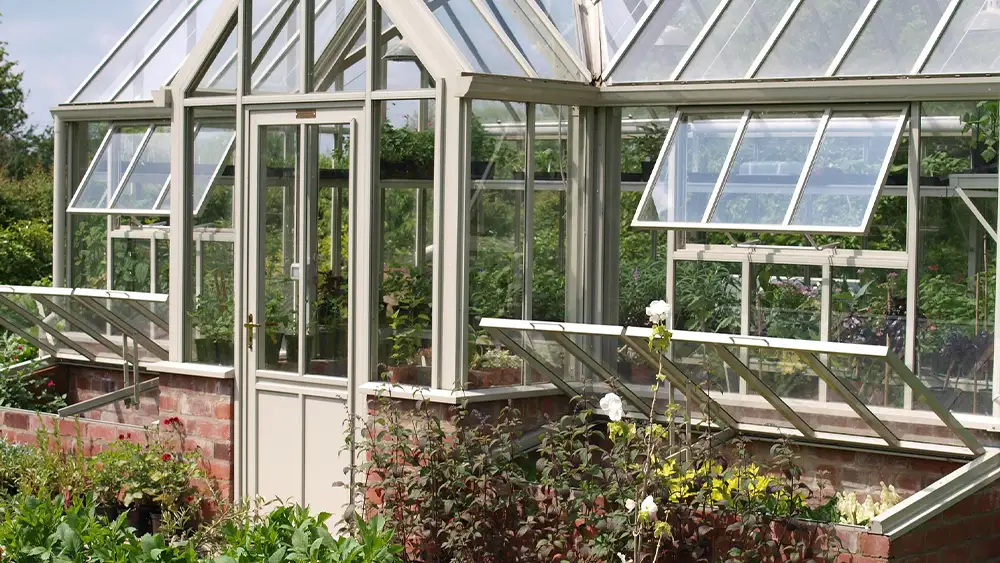The Benefits of Different Greenhouse Structures for Year-Round Growing

To cultivate crops throughout the year, advanced greenhouse structures play a critical role in providing optimal growing conditions. The controlled environments of greenhouses allow growers to extend the growing season and produce high-quality produce all year round. This post delves into the various greenhouse structures, exploring their benefits, suitability for different climates, and the features that make them ideal for year-round cultivation.
Understanding Greenhouse Structures
Greenhouses differ in size, shape, and materials used, but they all serve the primary function of creating a light and temperature-controlled space for plants. Whether it is a hobbyist’s small greenhouse or a commercial facility, understanding the type of structure that best fits the grower’s needs is crucial. Growers can choose from traditional frame structures to more contemporary designs depending on their goals and the crops they plan to cultivate. Different designs of greenhouses have unique attributes that cater to specific climates and growing styles, making it essential for growers to assess their environments before selecting a structure.
Types of Greenhouse Structures
There are primarily three types of greenhouse structures: lean-to, even-span, and quonset. Each structure has its advantages, and the choice often depends on the grower’s space availability and budget.
The lean-to greenhouse is attached to an existing building, making it a space-efficient option. It utilizes the existing structure for support, which often reduces material costs. Its dependence on a neighboring building for sunlight may limit the amount of natural light the plants receive.
The even-span greenhouse, characterized by a symmetrical design, offers greater stability and an even distribution of light, making it ideal for larger crops. This structure allows for ample space inside for walking paths and includes features that improve air circulation and temperature regulation.
The quonset greenhouse features a rounded roof and is typically less costly to build. Its arched design can withstand snow loads better than traditional structures, making it beneficial in colder climates. The shape may limit the use of vertical space unless additional modifications are made.
Benefits of Greenhouse Structures

Each greenhouse structure provides unique advantages that can greatly influence a grower’s productivity. A primary benefit of any greenhouse is the possibility of controlled environmental conditions. Growers can manage factors such as temperature, humidity, and sunlight, which allows for crop production outside the typical growing season. Utilizing a greenhouse also provides protection against pests and diseases. With controlled entry points and the ability to manage environmental factors, growers can significantly reduce the risks posed by insects and diseases, which can devastate crops. Greenhouses can help in water conservation. Through methods such as drip irrigation and rainwater harvesting, growers can optimize water usage, making it possible to grow more sustainable crops while reducing costs associated with water supply.
Climate Considerations for Greenhouse Structure Selection
When selecting a greenhouse structure, climate is a crucial factor to consider. Locations with heavy snowfall may benefit more from quonset-shaped greenhouses because of their ability to shed snow effectively. On the other hand, areas with high temperatures may require structures with ventilated ceilings or sidewalls to minimize heat build-up. In regions where sunlight is limited during certain seasons, choosing a greenhouse with a south-facing aspect can enhance light absorption. Additionally, utilizing materials like double-walled polycarbonate can help retain heat during colder months, allowing for a longer growing season.
Cost Implications of Different Greenhouse Structures
The initial cost of building or purchasing a greenhouse varies widely based on the structure and materials used. Quonset greenhouses generally have lower upfront costs due to their simple construction and minimal material requirements. However, the long-term efficiency and durability of even-span greenhouses might justify their higher price tag. Investing in quality greenhouse designs can yield considerable dividends over time in terms of energy savings and crop yield. While some might opt for the cheapest option initially, factoring in future operational costs is necessary for evaluating overall value. Planning for potential modifications, such as heating systems and ventilation, can also impact the total expenditure.
Innovative Designs for Enhanced Production

In recent years, innovative designs of greenhouses have been emerging to further maximize production capabilities. Vertical greenhouses, which utilize vertical farming techniques, are becoming increasingly popular. These greenhouses allow for high-density crop production, reducing land usage while increasing yield. Implementing advanced greenhouse technologies such as hydroponics and aquaponics can also enhance growth rates and sustainability.
Hydroponic systems eliminate the need for soil, directly delivering nutrients to plants through a water-based solution. Aquaponics combines fish farming and plant cultivation, creating a symbiotic environment that provides natural fertilizers while conserving water. These innovative greenhouse methods significantly enhance crop yield and play a vital role in sustainable agriculture practices. Adopting contemporary designs serves to address the growing challenges of food security and environmental sustainability.
Choosing the Right Greenhouse Design for Your Needs
Determining the right greenhouse design for specific growing needs requires careful consideration of multiple factors. Potential growers should evaluate their budget, crop selection, available land, and climate conditions. Prioritizing growth objectives, whether commercial or personal, guides the decision-making process. Understanding the different designs allows growers to invest in structures that meet their unique requirements. Consulting with experts or visiting existing greenhouses can provide invaluable insights into what works best in different situations.
Read More: Beautiful Garden Fountains
Experimentation with various structures can also lead to improved growth techniques and an understanding of plant needs. Effective use of greenhouse structures ensures successful harvests regardless of external climate challenges, enabling growers to cultivate quality produce all year round.

news via inbox
Sign up and never miss out on the latest news and updates at HighStuff




